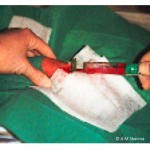Will Fat Biopsies Predict Treatment Response?
Monday, April 27, 2009 As a nephrologist, I come from a field in which many key decisions are based on the outcome of a biopsy specimen. There are indeed many areas of medicine in which tissue biopsies are routinely used to establish a diagnosis or to guide treatment. Could the same hold true for obesity?
As a nephrologist, I come from a field in which many key decisions are based on the outcome of a biopsy specimen. There are indeed many areas of medicine in which tissue biopsies are routinely used to establish a diagnosis or to guide treatment. Could the same hold true for obesity?
We have long known that obesity is by no means a homogeneous condition and that the clinical manifestation of obesity related comorbidities covers a wide and unpredictable spectrum of disorders. It is thus only likely that different forms of obesity are heterogeneous at the tissue level and in their response to treatment.
A first indication of just how adipose tissue biopsies may be used in clinical practice now comes from a study published in this month’s issue of the International Journal of Obesity. In this paper, Wang and colleagues from the Pennington Biomedical Research Center, Baton Rouge, LA, USA, use microarray gene expression technology to group 72 otherwise healthy obese men and women into two distinct clusters (denoted red and green). Interestingly, the red cluster contained no men, had “red” patients had less visceral fat and smaller fat cells. More importantly, it appeared that the patients in the green cluster appeared to respond with slightly greater weight loss to adrenergic treatment with ephedra and caffeine (not exactly my choice of antiobesity drugs) in an 8 week intervention.
Although the authors may be a tad overenthusiastic in terms of proclaiming that this paper now “brings us into an era of personalized treatment in the obesity clinic”, there is certainly some hope that fat biopsies may someday prove to provide a clinically useful predictor for response to specific treatments.
Obviously much needs to happen before anyone would seriously consider routine fat biopsies in clinical practice. For one, we would need prospective studies on sensitivity and specificity to detect clinically significant differences in response. Obviously, cost-effectiveness analyses would also need to establish the cost/benefit ratio for what is still a very expensive technology.
For now, nonetheless, the study confirms what I have maintained all along – obesity is a heterogeneous disorder and there is no reason to assume that any one treatment will work for all.
AMS
Edmonton, Alberta


